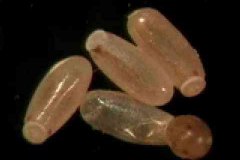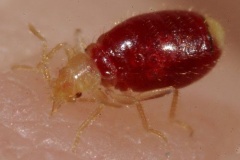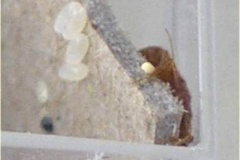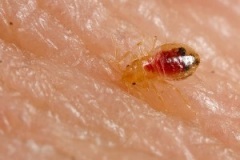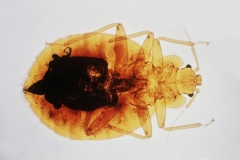When you notice little red bumps on your skin, its natural to wonder where they came from.
While some insect bites are more obvious than others
(think mosquitos or ticks).
Most of the time bite marks look very similar between different insects.
Here we are going to talk about 3 ways to tell the difference between bed bugs and fleas.
To begin, we will need to establish what bed bug bites look like.
Bed bug bites are known to appear as clusters of reddish-brown welts around the area of the bite.
On average, bed bugs bites start to itch within 2 3 hours after being bitten.
Both of those traits are similar with flea bites.
Knowing where the bulk of bite marks are on your body is a good indicator of whats biting you. Bed bugs will usually target the upper torso, while fleas target the lower extremities like the legs.
Why?
Because bed bugs, as the name suggests, often make their nests in or around bedding material like sheets and mattresses.
Since they often nest toward the head of the bed, bed bugs will gravitate toward the upper torso and the arms when they feed.
(Though a bed bug mattress protector could fix that).
Fleas, meanwhile, tend to target the legs.
This is because
Your legs are typically within leaping distance for fleas. They cant fly, so fleas find hosts to feed off of by jumping.
Unlike bed bugs, fleas can jump an average height of 13 inches.
Secondly, fleas rarely target humans but will feed on them if they need a new food source.
As most pet owners can attest, fleas are more at home on dogs or cats.
This is because animals are lower to the ground than us and are easier to access.
We sometimes get bitten because migratory fleas will wind up jumping from the backs of our furry friends and onto our lower limbs.
Size and color are important factors in determining any kind of insect bite. And while the differences may seem minor at first glance, there are several clues to help distinguish a flea bite from a bed bug bite.
Flea bites are smaller and usually appear bright red in color. These bites are so closely grouped together that they might even form patterns across your skin.
Bed bug bites are slightly larger, and while they still look like reddish welts, theyre not as bright red as flea bites.
Bed bug bites dont make up any complex patterns. Instead, theyre grouped together in a line or zigzag.
The feeding habits of these bugs can make a world of difference in identifying what bit you.
As mentioned earlier, bed bugs are nocturnal creatures. During the day, they gather together in secluded hiding places.
Since bed bugs rarely venture out during the day, chances are they wont seek out a meal.
In contrast, fleas dont follow a set schedule: they feed whenever they want to feed, and they travel whenever they want to travel.
Youll know right away if youre dealing with fleas because youll see them crawling along your body during the day.
(A bed bug is not likely to do that).
Aside from the coloration, there are a few shared traits between flea bites and bed bug bites. These often relate to the symptoms that accompany each bite.
Both types of bites will start to itch not long after youve been bitten.
But why dont you feel yourself being bitten in the moment?
During a feeding session, bed bugs and fleas inject saliva into the bloodstream. Their saliva contains anticoagulants to keep the blood from clotting, and antihistamines to prevent any immediate itching.
This allows them to drink human blood without incident. Once the antihistamines wear off, thats when the itching sensation begins as your body tries to fight off the other bacteria carried in the saliva.
Unfortunately, bites from both creatures can be potentially dangerous.
This is because both bed bug bites and flea bites have a chance of severe infection.
This usually occurs from excessive scratching that creates an open wound on the skin.While scratching bite marks might temporarily relieve the itching, it also keeps the wounds open and spreads lingering bacteria.
Another thing thats harmful is if you have insect-related allergies and severe reactions to insect bites. If you ever develop an allergic reaction you should seek medical attention immediately.
Flea bites will typically heal on their own within a week.
To speed up the process or alleviate symptoms, here is what you can try:
Antihistamines come in 2 forms:
Lotions: Skin lotions, like aloe vera gel and calamine lotion, can also relieve itchiness. Their cooling properties reduce swelling and inflammation, while the minerals and vitamins found in them moisturize the skin and promote healing.
Home Remedies: There are plenty of home remedies you can use to treat flea bites. Cold compresses and liquid astringents, such as witch hazel or apple cider vinegar, are 2 commonly used home treatments.
Like flea bites, bed bug bites will naturally heal after 1-2 weeks. The treatment methods for bed bug bites are also the same as the aforementioned treatments for flea bites.
Whether youre using antibiotic treatments or simple home remedies, routine treatment is an important part of the healing process.
Not only do the above treatments help your bodys immune system, they also reduce the severity of the symptoms associated with bug bites.
Reducing the effects of the symptoms means youre less likely to experience skin irritation, which reduces the risk of infection or other harmful symptoms.
Fleas and bed bugs arent the only biting insects out there. Ticks and mosquitos also view humans as a source of food and bite us to drink our blood.
Spiders, meanwhile, will only bite humans in self-defense: even then, a spiders fangs are too small to penetrate human skin.
Most spiders also lack venom strong enough to do any serious harm to humans: the most notable exceptions are black widows and brown recluses, who both have more potent venom and can be hard to get rid of.
After an insect bites you, youll notice swelling and redness around the area of the bite.
In some cases, youll see an open wound where the skin was broken. Spiders bites, for instance, will consist of 2 small puncture wounds in your skin.
Some bug bites will take on a distinct pattern. As mentioned earlier, flea bites and bed bug bites may appear in clusters or in zig-zag patterns. Ticks will leave behind a bullseye shape, with a large ring surrounding the actual bite.
skin irritation is another common symptom, as your immune system begins the process of eradicating the foreign bacteria injected by insects.
In addition to fleas and bed bugs, mosquitos also inject antihistamines and anticoagulants into the bloodstream to stave off itching and clotting while they drink.
If left untreated, bug bites will heal on their own. However, repeated itching or aggravation of the wounds can lead to serious infections; this is why scratching bug bites isnt recommended by health experts.
Both bed bugs and fleas can become a huge problem if not dealt with quickly.
The key similarities and differences between fleas and bed bugs are highlighted in the below table.
Bed Bug Bites vs. Flea Bites
If you were injured by a pest infestation in a hotel, apartment, or other location, you may be entitled to financial compensation. Submit your information for a free case evaluation today!
See more here:
Bed Bug Bites vs. Flea Bites (3 Critical Differences) - Bed Bug Lawyers

 Residence
Residence  Location
Location 
 Adult bed bugs are about 3/16-inch long and reddish-brown, with oval, flattened bodies. They are sometimes mistaken for ticks or cockroaches. The immature's (nymphs) resemble the adults, but are smaller and lighter in color. Bed bugs do not fly, but can move rapidly over floors, walls, ceilings and other surfaces. Female bed bugs lay their eggs in secluded areas, depositing 1, 2 or more eggs per day and hundreds during a lifetime. The eggs are tiny, whitish, and hard to see on most surfaces without magnification (individual eggs are about the size of a dust speck). Their flat shape enables them to readily hide in cracks and crevices. The body becomes more elongate, swollen, and dark red after a blood meal. Bed bugs have a beaklike piercing-sucking mouthpart system. The adults have small, stubby, nonfunctional wing pads. Newly hatched nymphs are nearly colorless, becoming brownish as they mature. Nymphs have the general appearance of adults. Eggs are white and about 1/32 inch long.
Adult bed bugs are about 3/16-inch long and reddish-brown, with oval, flattened bodies. They are sometimes mistaken for ticks or cockroaches. The immature's (nymphs) resemble the adults, but are smaller and lighter in color. Bed bugs do not fly, but can move rapidly over floors, walls, ceilings and other surfaces. Female bed bugs lay their eggs in secluded areas, depositing 1, 2 or more eggs per day and hundreds during a lifetime. The eggs are tiny, whitish, and hard to see on most surfaces without magnification (individual eggs are about the size of a dust speck). Their flat shape enables them to readily hide in cracks and crevices. The body becomes more elongate, swollen, and dark red after a blood meal. Bed bugs have a beaklike piercing-sucking mouthpart system. The adults have small, stubby, nonfunctional wing pads. Newly hatched nymphs are nearly colorless, becoming brownish as they mature. Nymphs have the general appearance of adults. Eggs are white and about 1/32 inch long.
 Adults feed once a week on average but feed many times during their four-month or longer life span. Adults usually live for around 10 months, but can live for a year or more. In a home, where the environment is conducive to their reproduction (their ideal breeding temperature is between 21° to 28°C), bed bugs can breed year round. Adult bed bugs have been known to survive for as long as 550 days (over a year and a half!) without feeding.
Adults feed once a week on average but feed many times during their four-month or longer life span. Adults usually live for around 10 months, but can live for a year or more. In a home, where the environment is conducive to their reproduction (their ideal breeding temperature is between 21° to 28°C), bed bugs can breed year round. Adult bed bugs have been known to survive for as long as 550 days (over a year and a half!) without feeding. Fact: The biggest mistake most people with bed bug infestations make, is trying to solve their bed bug problem without a Professional Pest Control Exterminator. Most people who try to solve their bed bug infestation by themselves end up making the problem significantly worse and causing the bed bug infestation to dramatically spread. Don't make the mistake of trying to solve your bed bug problem without a Certified Pest Control Expert.
Fact: The biggest mistake most people with bed bug infestations make, is trying to solve their bed bug problem without a Professional Pest Control Exterminator. Most people who try to solve their bed bug infestation by themselves end up making the problem significantly worse and causing the bed bug infestation to dramatically spread. Don't make the mistake of trying to solve your bed bug problem without a Certified Pest Control Expert. Be ready for some very serious, exhausting, detailed, hard work! Get a friend or friends to help you, if possible, because the amount of preparation can sometimes be mind-boggling. Do it right the first time; do the necessary hard work. You can't skimp when it comes to preparing for bed bug treatment. Follow your Exterminator's customized instructions carefully, for achieving the best results.
Be ready for some very serious, exhausting, detailed, hard work! Get a friend or friends to help you, if possible, because the amount of preparation can sometimes be mind-boggling. Do it right the first time; do the necessary hard work. You can't skimp when it comes to preparing for bed bug treatment. Follow your Exterminator's customized instructions carefully, for achieving the best results. Tip: Get a tape measure and measure your mattress and box spring; length, width and height '“ record full dimensions, and which room (if you have more than one bedroom) on paper.
Tip: Get a tape measure and measure your mattress and box spring; length, width and height '“ record full dimensions, and which room (if you have more than one bedroom) on paper. 3. Make sure you completely empty all storage areas and closets in all rooms in your living space, including anything fabric; towels, curtains, table covers, miscellaneous linens, etc., even if you haven't used it, or it's in the room next door, it has to be cleaned and properly stored and sealed afterward as will be explained - no exceptions. This intensive procedure has to be done if you want the maximum chance of success. Keep closets and storage spaces empty, so they can be treated fully by a Bed Bug Exterminator.
3. Make sure you completely empty all storage areas and closets in all rooms in your living space, including anything fabric; towels, curtains, table covers, miscellaneous linens, etc., even if you haven't used it, or it's in the room next door, it has to be cleaned and properly stored and sealed afterward as will be explained - no exceptions. This intensive procedure has to be done if you want the maximum chance of success. Keep closets and storage spaces empty, so they can be treated fully by a Bed Bug Exterminator. Important Reminder: Please remove all hanging pictures from walls, gently and carefully vacuum the back of these items and then place them in one area of your home for treatment by our Expert Bed Bug Specialist.
Important Reminder: Please remove all hanging pictures from walls, gently and carefully vacuum the back of these items and then place them in one area of your home for treatment by our Expert Bed Bug Specialist. 3. Double vacuum from top to bottom, your entire bed, mattress, box spring and bed frame. It can't be emphasized enough: mattresses and box spring frames should be vacuumed twice with the bristled vacuum attachment, especially around the tufts and seams. Also inspect for blood stains and bed bug harborage locations.
3. Double vacuum from top to bottom, your entire bed, mattress, box spring and bed frame. It can't be emphasized enough: mattresses and box spring frames should be vacuumed twice with the bristled vacuum attachment, especially around the tufts and seams. Also inspect for blood stains and bed bug harborage locations.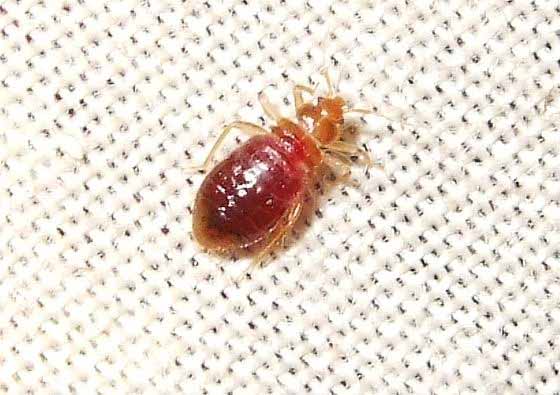 Bed bugs are visible to the naked eye too. The reason that you dont see them around frequently is that they are nocturnal and they do not parade around in the day time. They are small insects that resemble the apple seed in shape and size, but they are a little thinner. The bed bugs are rounded on top. Many people do not even realize that they are seeing bed bugs when they see them for the first time, as the exposure to it is very less. It is hard to see crawling insects off late. Even in the hotels, you will not realize that it is a bed bug till it crawls up to your shoulders. The bed bugs are pretty shy. They do not move when you are moving. It is only when you are too much into your dream that they will even come forward to attack you.
Bed bugs are visible to the naked eye too. The reason that you dont see them around frequently is that they are nocturnal and they do not parade around in the day time. They are small insects that resemble the apple seed in shape and size, but they are a little thinner. The bed bugs are rounded on top. Many people do not even realize that they are seeing bed bugs when they see them for the first time, as the exposure to it is very less. It is hard to see crawling insects off late. Even in the hotels, you will not realize that it is a bed bug till it crawls up to your shoulders. The bed bugs are pretty shy. They do not move when you are moving. It is only when you are too much into your dream that they will even come forward to attack you. Once it is confirmed that they are hiding in a particular place, you need to check the mattresses, the beds, and crevices in sofas. These are the usual hiding spots for the bed bugs. The presence of the bed bugs is accompanied by a reddish brown stain in the place where they stay. If the female bug lays eggs, there will be white nymphs located there. You will be able to see the excrement, and the shed skins in case bed bugs are present. In case you want to know if they are present, try waking up in the dead of the night, and stay still, you might feel them crawling over you to your shoulders or any exposed part. If you move a bit, it will also back out, and if you again stay still, it will advance to the exposed part. In case you move again, it will get freaked and it will run away to its hideout.
Once it is confirmed that they are hiding in a particular place, you need to check the mattresses, the beds, and crevices in sofas. These are the usual hiding spots for the bed bugs. The presence of the bed bugs is accompanied by a reddish brown stain in the place where they stay. If the female bug lays eggs, there will be white nymphs located there. You will be able to see the excrement, and the shed skins in case bed bugs are present. In case you want to know if they are present, try waking up in the dead of the night, and stay still, you might feel them crawling over you to your shoulders or any exposed part. If you move a bit, it will also back out, and if you again stay still, it will advance to the exposed part. In case you move again, it will get freaked and it will run away to its hideout.
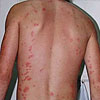




 Adult females lay as much as 5 eggs a day or 500 in their entire lifetime. As aforementioned these eggs are whitish in color sometimes they are visible enough to see without the use of magnifying devices. Toprevent these eggs from ever spreadingand to trap them inside your infested mattress you need to use an effective and provenbedbug mattress cover. These eggs can be found in crevices or cracks in the wall, floor, behind wallpaper, in furniture, baseboards and the like. Their flat characteristic makes it easy for them to find dwelling in tiny crevices. From its namesake bed bugs are often found living inbeds, tufts, seams, mattress crevices, box springs the headboard or the bed frame can be itself their sprawling Beverly Hills neighborhood. While it is common for the bed to be their domicile, nightstands, sofas, upholstered chairs, clocks, telephones, wall fixtures, and even ceiling fixtures like your smoke detector is more than enough space to set up camp.
Adult females lay as much as 5 eggs a day or 500 in their entire lifetime. As aforementioned these eggs are whitish in color sometimes they are visible enough to see without the use of magnifying devices. Toprevent these eggs from ever spreadingand to trap them inside your infested mattress you need to use an effective and provenbedbug mattress cover. These eggs can be found in crevices or cracks in the wall, floor, behind wallpaper, in furniture, baseboards and the like. Their flat characteristic makes it easy for them to find dwelling in tiny crevices. From its namesake bed bugs are often found living inbeds, tufts, seams, mattress crevices, box springs the headboard or the bed frame can be itself their sprawling Beverly Hills neighborhood. While it is common for the bed to be their domicile, nightstands, sofas, upholstered chairs, clocks, telephones, wall fixtures, and even ceiling fixtures like your smoke detector is more than enough space to set up camp.
